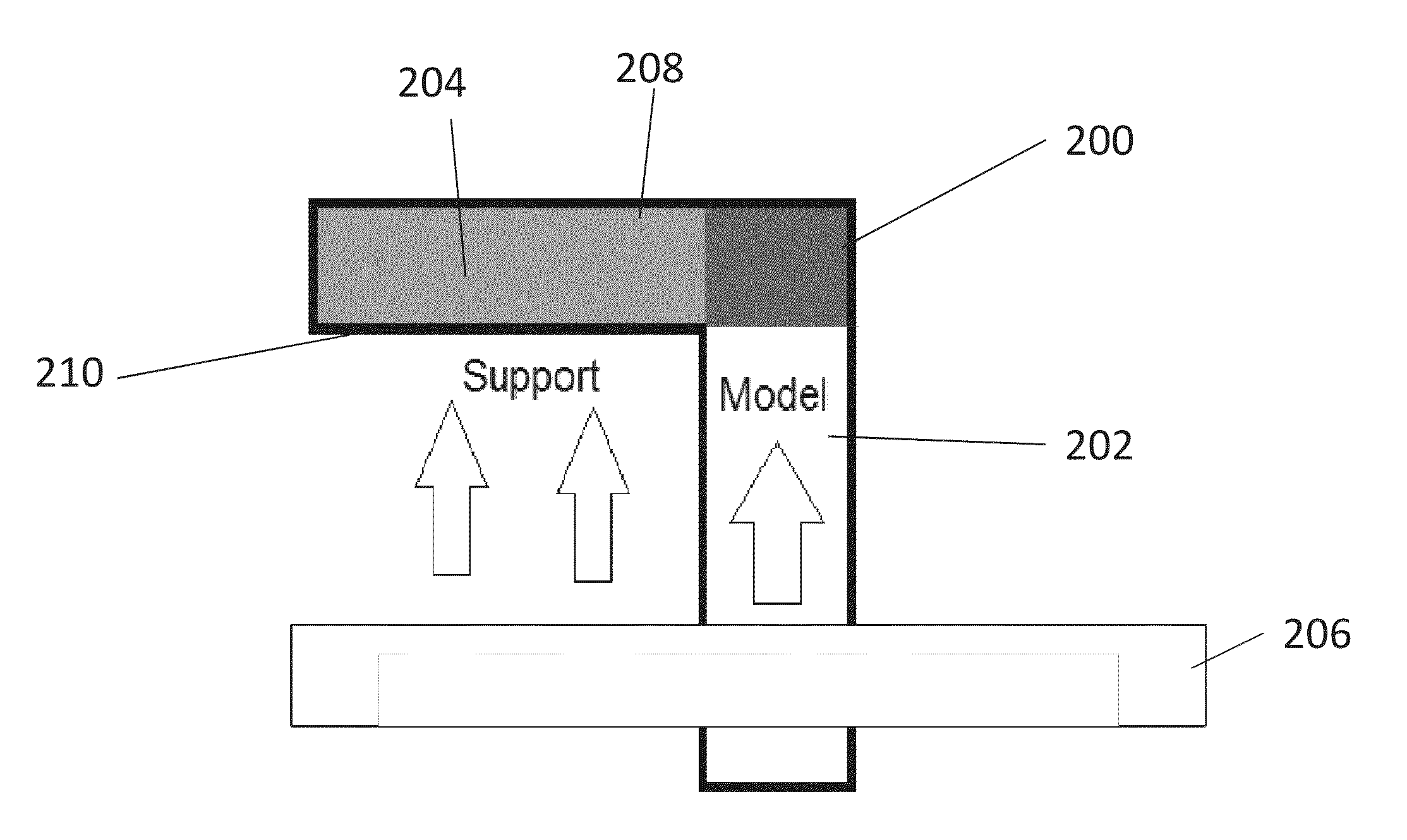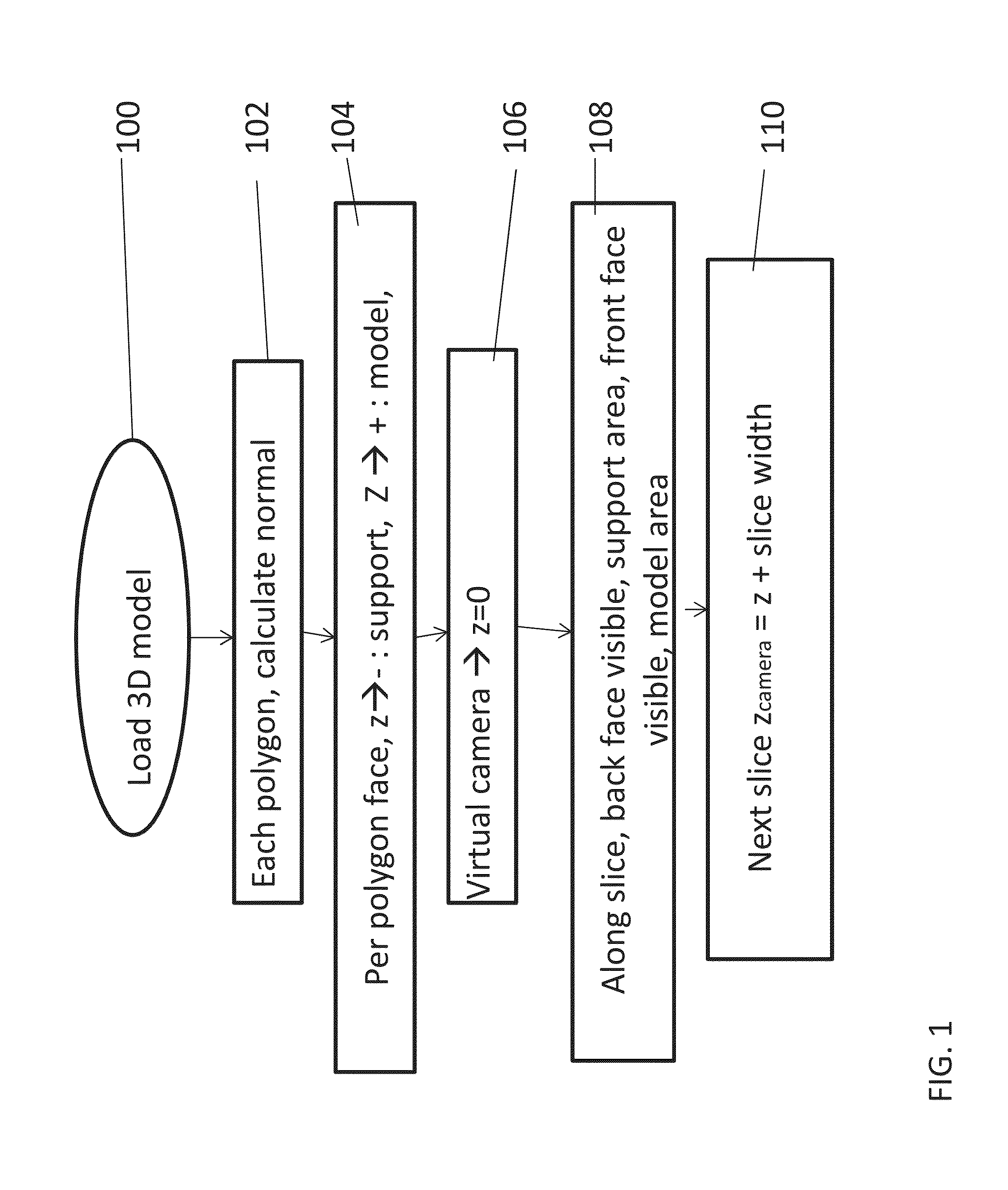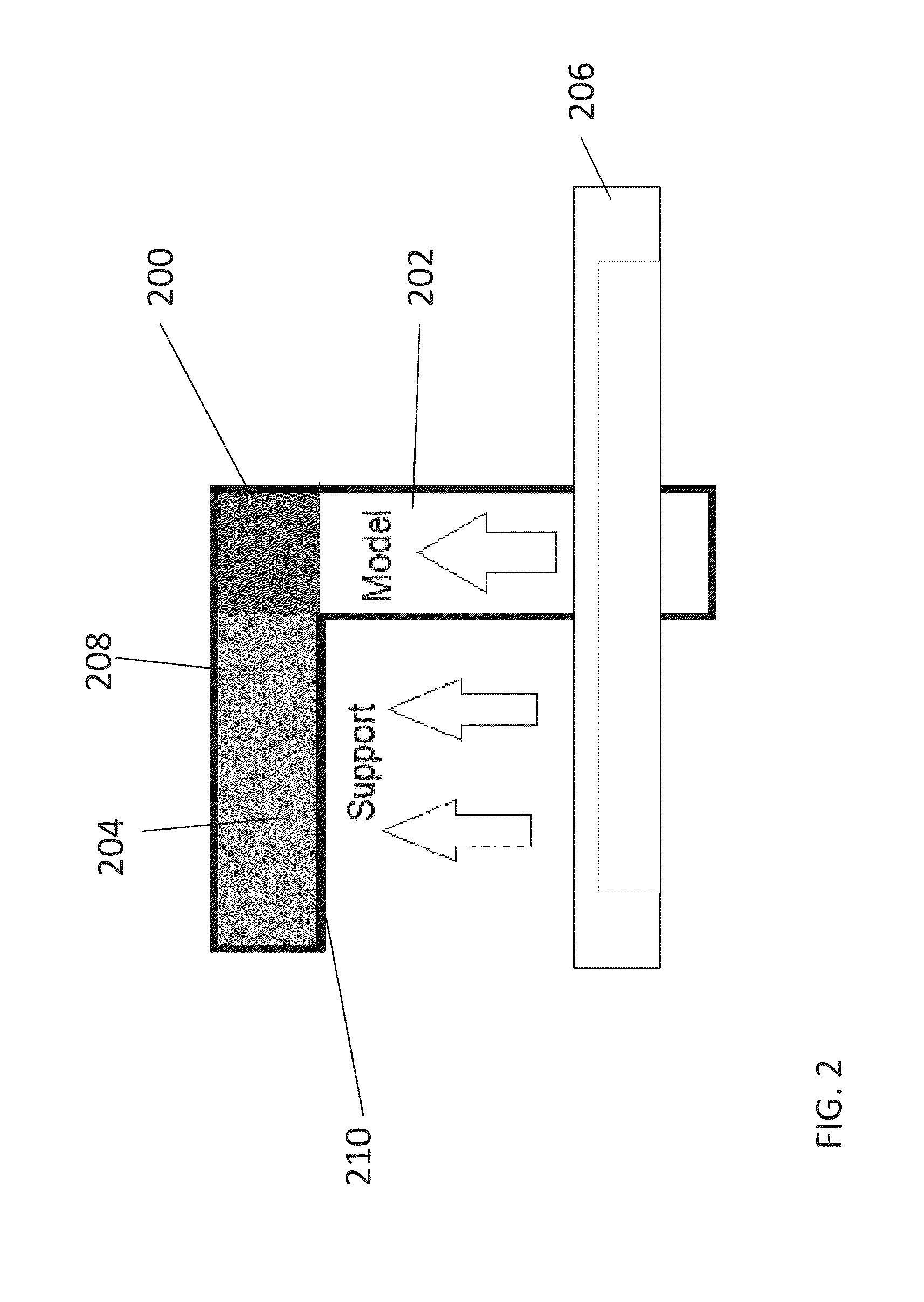Slicing and/or texturing for three-dimensional printing
a three-dimensional printing and slicing technology, applied in the direction of process and machine control, program control, instruments, etc., can solve the problems of customized solutions, complicated and long customized calculations, and the inability to manufacture the 3d model in its final form
- Summary
- Abstract
- Description
- Claims
- Application Information
AI Technical Summary
Benefits of technology
Problems solved by technology
Method used
Image
Examples
Embodiment Construction
[0036]The present invention, in some embodiments thereof, relates to a way of carrying out slicing for three dimensional printing and, more particularly, but not exclusively, to a way that is particularly suitable for carrying out on a graphics card.
[0037]As will be explained in greater detail below, a method for slicing a three-dimensional model for printing of a corresponding object by a 3D printer, comprises: obtaining the envelope of the object as polygons, then for each region of a predefined work area within the slicing plane: identifying the closest polygon of the envelope that is positioned above the respective region; where no polygon is identified, then marking a corresponding region as a no-print region; if the direction vector of said closest above polygon has a positive component in the Z direction, then marking said corresponding region as a model region; and if the direction vector of said polygon has a negative component in the Z direction, then marking the region as...
PUM
| Property | Measurement | Unit |
|---|---|---|
| Area | aaaaa | aaaaa |
| Surface | aaaaa | aaaaa |
| Distribution | aaaaa | aaaaa |
Abstract
Description
Claims
Application Information
 Login to View More
Login to View More - R&D
- Intellectual Property
- Life Sciences
- Materials
- Tech Scout
- Unparalleled Data Quality
- Higher Quality Content
- 60% Fewer Hallucinations
Browse by: Latest US Patents, China's latest patents, Technical Efficacy Thesaurus, Application Domain, Technology Topic, Popular Technical Reports.
© 2025 PatSnap. All rights reserved.Legal|Privacy policy|Modern Slavery Act Transparency Statement|Sitemap|About US| Contact US: help@patsnap.com



